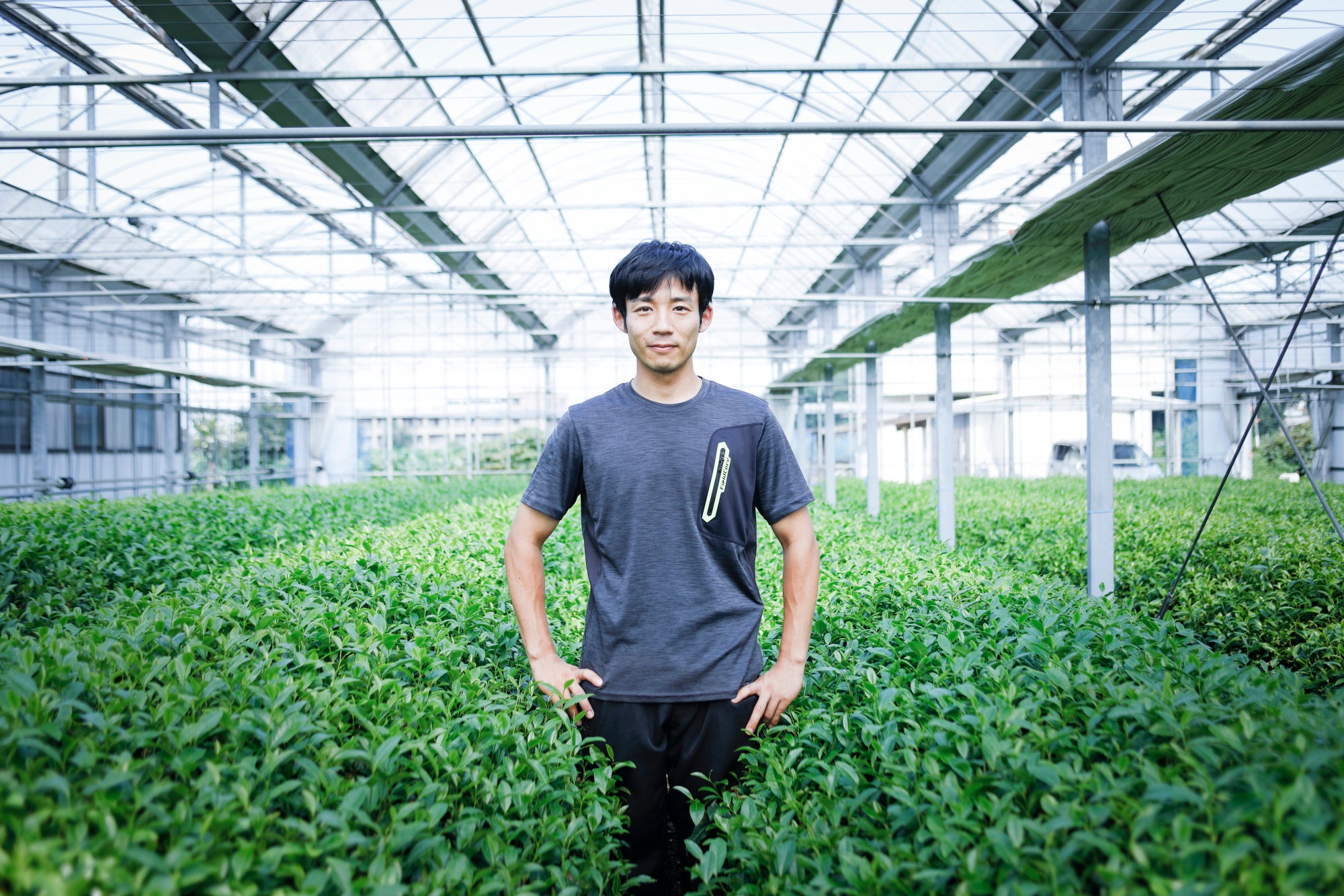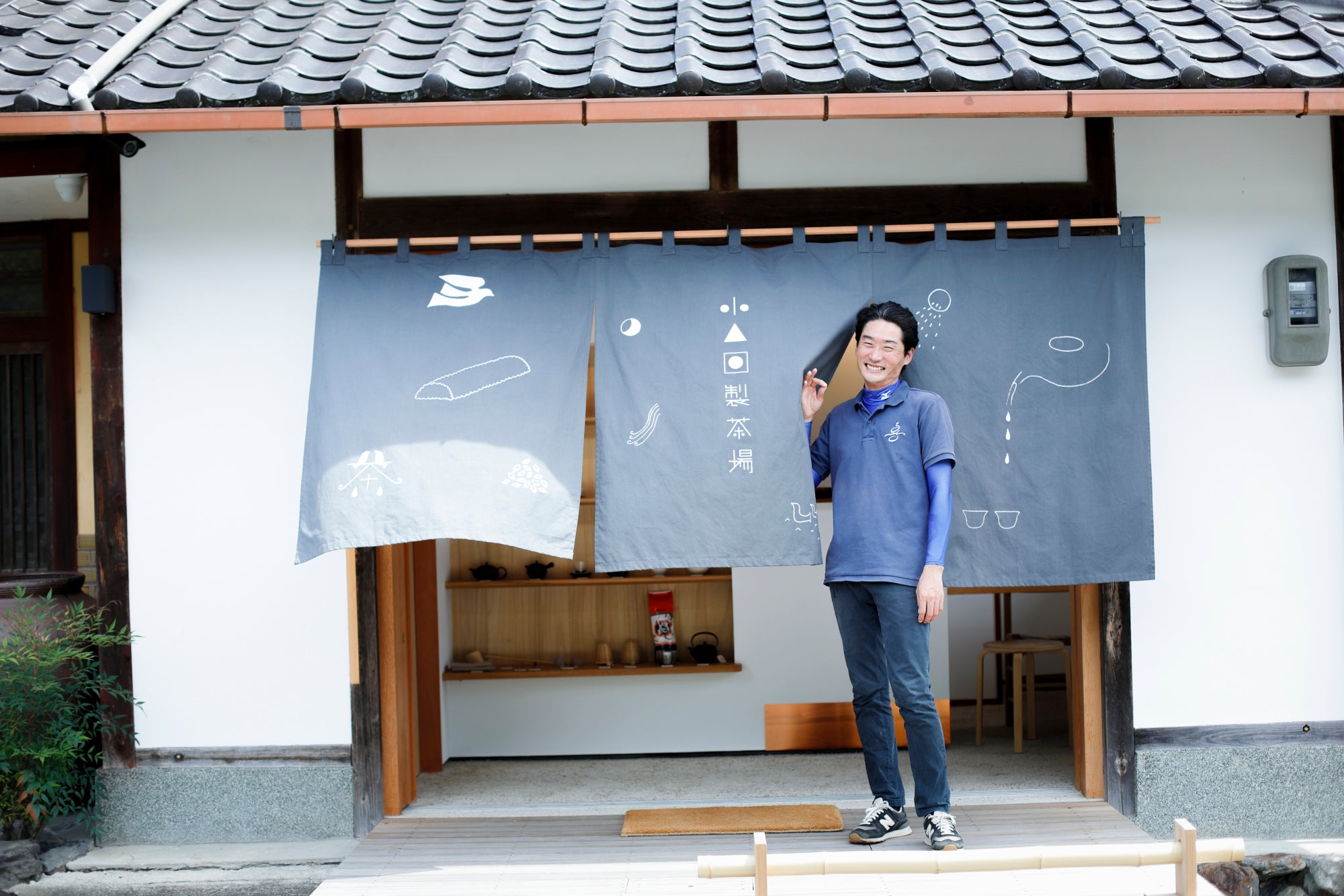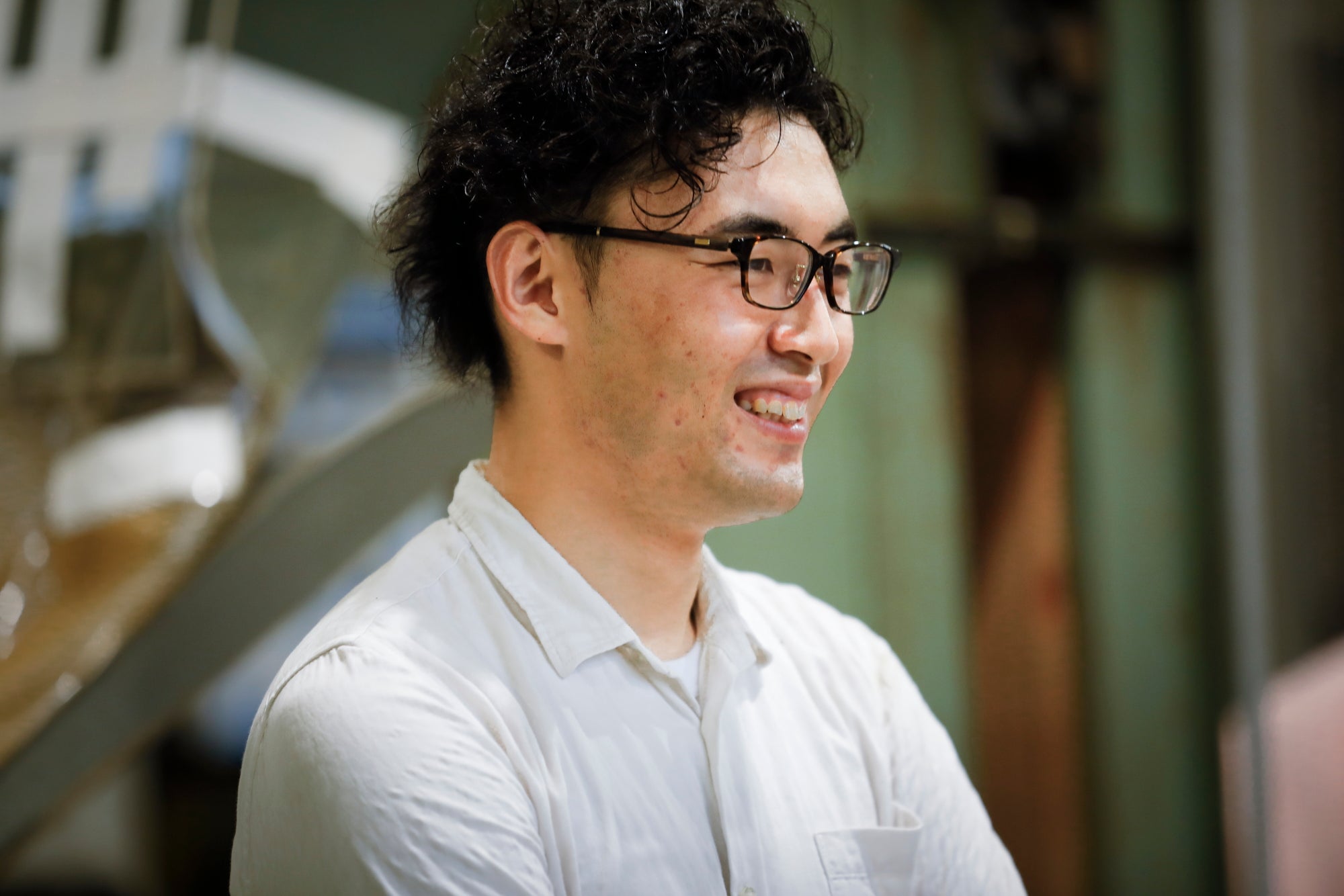Native Organic Varieties. Authentic kama-roasted tea for future generations by leveraging nature to its fullest.
The Origin
Gokase Town, Miyazaki
Gokase town in Miyazaki prefecture is nestled in a mountain region known as the navel of Kyushu, the southwesternmost of Japan’s main islands. It is said that around the 16th century, a stonemason who moved to this deep mountainous area covered with rich forests introduced tea to the area.
The Tea Farmer

Yōichi Kōrogi
One of Japan's leading masters of kama-roasted tea. Kōrogi-san has won the Minister of Agriculture, Forestry and Fisheries Prize a total of 16 times at the National Tea Fair for his organically-cultivated teas, which he arrived at through his rich experience in tea cultivation techniques and a depth of knowledge of the Gokase's nature.
Kōta Fujimoto
Fujimoto-san studied business administration at a university near Tokyo with a view to contributing to the future of Gokase, his birthplace, and joined Kōrogi-san's tea farm after graduation. While he has inherited Kōrogi-san's cultivation methods, he adds his own perspective and proposes innovative ways of tea making such as growing herbs and blending them with the tea crop.
The Tea
Gokase midori
Tea grown through organic cultivation, which transforms the life force of tea into aroma and flavor, embodies sensitivity that cannot be measured by formulas or numbers. The tea, which portrays a youthful image, is first roasted on high heat, gently rolled while not destroying the fibers of the leaves, and is hand-roasted again over low heat. This process creates a refreshing aroma that resemble new sprouts or young leaves as soon as it is brewed. It is a tea that can be enjoyed not only for the first brew, but also for the second and third infusions.


The color of the tea and steeped tea leaves.

Tea leaves prior to brewing
This is the appearance of wab_sab_ tea. These visual images only tell half the story - imagining what it will taste like is also a space to be filled by the person brewing the tea. By looking at the tea leaves prior to brewing, then from the first to third infusions, and seeing how these leaves gradually open up, one can try to imagine the taste and flavor of this tea. It is ultimately something to be experienced first hand, and not something that can be found on the web.
First infusion (Gokase Midori)

Second infusion (Gokase Midori)

Third infusion (Gokase Midori)

Fūshun
Tea leaves change moment by moment from the instant they are picked. The tea leaves are left to naturally wilt and ferment for a period of time, called ichō in Japanese, which is a technique used in the traditional method of producing Gokase kama-roasted tea to bring out a gorgeous aroma that differs from the leaf's original flavor. By letting the tea sit for two to three years after processing, the taste changes like wine, which is another pleasure of organic cultivation.


The color of the tea and steeped tea leaves.

Tea leaves prior to brewing
This is the appearance of wab_sab_ tea. These visual images only tell half the story - imagining what it will taste like is also a space to be filled by the person brewing the tea. By looking at the tea leaves prior to brewing, then from the first to third infusions, and seeing how these leaves gradually open up, one can try to imagine the taste and flavor of this tea. It is ultimately something to be experienced first hand, and not something that can be found on the web.
First infusion (Fushun)

Second infusion (Fushun)

Third infusion (Fushun)

The Environment
At 2000ft above sea level - everything you see is mountains.
Gokase is located more than an hour's climb up a winding road from Mt. Aso, the world's largest caldera volcano. The well-drained volcanic soil deposited by a series of eruptions from Mt. Aso has made Gokase uniquely suitable for tea cultivation.

Learn more about Gokase
The original landscape of Japan stretches before your eyes.
The lush green hills of the highlands have few flat areas, and instead of large-scale farms, people still live the traditional lifestyle of growing and eating rice and vegetables in their own fields. In Gokase, one can still see the original Japanese landscape where people live in harmony with nature.

Growing tea
Let nature take its course and you will have a tea that only this place can produce.
A tea with a great aroma and umami flavor is not made by calculation, but by following and respecting the environment of Gokase. The difference in morning and evening temperatures in the highlands enhances the aroma, and the morning mist rising from the valley blocking the sun enhances the flavor of the tea leaves. As a result of adapting cultivation methods so that the natural characteristics of the region can have the most positive effect on the tea leaves, they have created delicious tea that can only be produced in Gokase.

The future
Bring people back to the community of Gokase
Today, Fujimoto-san leads the next generation of tea in Gokase. He and his brother used to work part-time when he was a senior in high school, helping Kōrogi-san at the tea farm. He commuted by bicycle up and over mountain roads 6 miles each way. This is when Fujimoto-san developed a desire to do something for his hometown, which was suffering depopulation due to young people leaving for the cities.

Read stories from other farmers

Yokota Tea Farm
Sayama City, Saitama
Unbounded Urban Tea. Cultivation methods are given free reign to enhance the unique flavors of 17 single-origin tea varieties.

Koyama Tea Farm
Ujitawara Town, Kyoto
Sustainable Tea Farming. Do no harm to people or nature.
A sustainable environment keeps tea traditions alive.

Goda Tea Farm
Yame City, Fukuoka
A Flagship Tea Grown by Umami Obsessives.Unique methods hit upon through trial and error are used to bring out umami.






